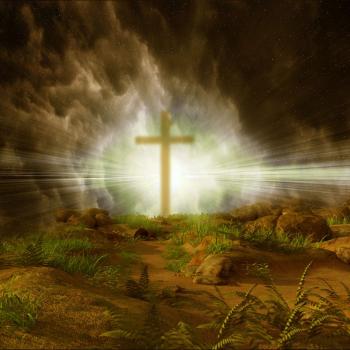
Palms
A History in a Coco-nut Shell
The versatile palm tree has been used by people since the dawn of time for food, shade, shelter, and decoration, not to mention all the items like baskets and rope that can be made from twisting and weaving it. When we think of Palm Sunday, we think of palm branches or fronds waving in the hands of people and covering the pathway of Jesus as He rode into Jerusalem. Curiosity got to me this year, and I decided to research where the idea of strewing the road with palm branches came from. What is the secret of this lovely tree that makes its leaves so special?
Palm Use In History
Palms appear in history as symbols of peace, victory, and life. It was a customary practice in the ancient world to welcome home a king by placing palm branches on the ground in front of him. In Ancient Greece, the palm branch represented victory. They were awarded to winning athletes. The Romans also related palm trees with victory, handing gladiators palm branches when they were victorious at tournaments. Although balding men would often paint on hair, Caesar preferred to use a circle of palm leaves.
Coins issued under the Roman Emperor Constantine showed his face in profile wearing woven palm leaves on his head signifying that he was a victorious ruler.
In Assyria, the palm was viewed as a sacred tree connecting heaven to earth. Images of winged creatures holding palm fronds have been found in this region.
While in Egypt, the Israelites used palm branches to signify jubilation, while the Egyptians believed palms represented eternal life and immortality. Mourners in Egyptian funeral processions carried palms.
Palms and the Phoenix
Here is another interesting relationship:
“The Palm Tree shares a fascinating grammatical connection with the mythical creature known as the phoenix, intertwining with the concept of resurrection life. Now, you might initially dismiss the notion of mythical creatures as mere fantasy, perhaps associating them with the realm of Harry Potter-esque fiction. However, the reality is surprisingly different. In John 12 and various other passages, the term for palm is the Greek φοῖνιξ (phoinix), which serves as the root for the English word phoenix. This linguistic bridge doesn’t solely exist in modern storytelling, but has deep roots in ancient biblical translations. Notably, the Greek Septuagint translates φοῖνιξ (phoinix) as phoenix in several Old Testament passages, for instance, ‘The righteous shall flourish like the phoenix (φοῖνιξ — phoinix).— Psalm 91:13.’
“Furthermore, the Dictionary of Deities and Demons highlights in its exploration of Phoenix how the Septuagint’s interpretations echo in works such as Ambrose’s De Trinitate and the Nag Hammadi Codex (NHC II 122:28-29). This interconnectedness underscores the rich symbolic tapestry surrounding the Palm Tree and its linguistic associations with themes of renewal and rebirth.
“Delving deeper into the cultural context, we find that the linguistic connection between the Phoenix and the Date Palm emerges from ancient cosmic imagery and worldview. In the Ancient Near East, the myth of the Phoenix intertwines with the symbolism of the Palm Tree. According to this myth, found in Hesiod and others, when the Phoenix reached the age of 500, it would construct a nest atop a towering date palm tree, fashioning it from fragrant substances like frankincense, myrrh, and other fine spices and gums. The Phoenix would then sing a melodic tune before setting itself ablaze. From the ashes, an egg would emerge, which too would ignite, leading to the Phoenix’s glorious resurrection. Following this ritual, the Phoenix would carry its bones to Heliopolis — the City of the Sun in Egypt — where they would be interred within the Temple of the Sun.
“This symbolic ritual unfolded in a ceremonial manner within the funerary customs of Ancient Egypt. Date Palm wine held significance in ancient Egyptian mummification practices, serving as a cleansing agent for the deceased. Dates themselves were often placed in tombs as offerings to the gods. A notable example is found in the accounts of Ramses III, who reportedly presented 65,480 dates to the Temple of Ra, along with several thousand to the Temple of Hapi. The leaves of the Date Palm were revered as ‘the bouquet of life’ and were incorporated into garlands discovered in the Tomb of King Tutankhamen.
“Moreover, the Date Palm held profound associations with the sun-god Ra due to its towering, feathery leaves that mirrored the sun’s radiance. Both the goddess Hathor and Nut were linked to the Date Palm, bearing the title “Lady of the Date Palm” and depicted rising from its branches to offer sustenance to the departed, thus bestowing eternal life bestowed by the gods (J. M. Robinson).
Palms in the Scriptures
So all that to say, palms were pretty commonly used to show some type of honor in ancient cultures. They specifically entered the Jewish tradition as decor in the temple:
In Ezekiel’s famous vision of the temple, he saw that “the faces of the projecting walls were decorated with palm trees,” and he also noted, “from the floor to the area above the entrance, cherubim and palm trees were carved on the wall of the outer sanctuary.” The temple is a veritable forest of palms. Also, The Old Testament describes palm tree decorations in Solomon’s temple. Palm branches were also used in the Festival of Booths..
It would not have been an uncommon occurrence to throw palm branches in the path of someone a group wished to honor, and at the moment Jesus entered into Jerusalem, the public held Him in high esteem. In fact, the event is described in Matthew 21:1-11, Mark 11:1-11, Luke 19:28-40, and John 12:12-19, all of which portray Jesus entering Jerusalem on a donkey, with crowds hailing him as the Messiah.
“As they approached Jerusalem and came to Bethphage on the Mount of Olives, Jesus sent two disciples, saying to them, ‘Go to the village ahead of you, and at once you will find a donkey tied there, with her colt by her. Untie them and bring them to me. If anyone says anything to you, say that the Lord needs them, and he will send them right away.’
This took place to fulfill what was spoken through the prophet:
Say to Daughter Zion,
‘See, your king comes to you,
gentle and riding on a donkey,
and on a colt, the foal of a donkey.’
The disciples went and did as Jesus had instructed them. They brought the donkey and the colt and placed their cloaks on them for Jesus to sit on. A very large crowd spread their cloaks on the road, while others cut branches from the trees and spread them on the road. The crowds that went ahead of him and those that followed shouted,
‘Hosanna to the Son of David! Blessed is he who comes in the name of the Lord! Hosanna in the highest heaven!’”
The scene is great and quite celebratory. Did you realize there is another place where the mirror image of this scene occurs?
“After this I looked, and there before me was a great multitude that no one could count, from every nation, tribe, people and language, standing before the throne and before the Lamb. They were wearing white robes and were holding palm branches in their hands. And they cried out in a loud voice:
‘Salvation belongs to our God,
who sits on the throne,
and to the Lamb.’
All the angels were standing around the throne and around the elders and the four living creatures. They fell down on their faces before the throne and worshiped God, saying:
‘Amen!
Praise and glory
and wisdom and thanks and honor
and power and strength
be to our God for ever and ever.
Amen!’”
So there’s some trivia you can ruminate on and share as you receive your palms on Sunday and sing the songs and hear the message. It really is more than just a tree!
God bless you, and happy Palm Sunday!
















